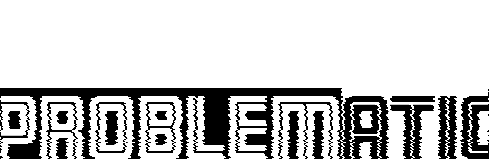This semester, we’ve been given an opportunity to build a body of work together on our studio’s own interpretation of design principles, philosophies, rhetoric, perspectives, and practices. As I reflect on our first studio project, I’m understanding (more so now than before) that we weren’t given problems to solve or prompts seeking solutions. Instead, we were all given a set of provocations that helped us break away from a problem solving and/or solution seeking framework. Through this project, I’m beginning to see Design as a conduit for posing plausible futures.
In the design process, we are so often in an urgency to want a specific answer to result from our process. As my team tried ideas, cast them aside, came up with new ones and started over, we settled on an understanding that we don’t always have to have the right answer or a clear solution. Design speculation became a tool for us that subverted and challenged our relationship with assumptions and gaps in our understanding. During this project, whenever I started seeking out a solution, I unconsciously began shutting down possibilities of getting a deeper understanding of the problem. I find that people have a tendency to quickly push for solutions because solutions make us feel good — they provide clarity and specific answers to questions. However, seeking solutions restricts our scope of inquiry.
I find that problems are abstract to begin with. Problems are meant to raise questions and the ones we come across (especially in grad studio) are not always solvable and instead they can be ambiguous, mercurial, and straight up confusing. In A New Paradigm for Design Studio Education Tsungjuang Wang brings up Alain Findeli’s thoughts on this matter:
“According to this author, design education is still conducted under the epistemological paradigm of positivism that is central to the university model of education. Thus, a project in a design studio is presented as a problem that needs to be solved. The solution is identified and the project becomes the rational or causal link. Findeli believes that the entire design project needs to be conceived in a different way. Instead of a problem and a solution, there would be a system as it now exists and a system as it might exist in the future. The design would not be an application of art or science but an introduction of art or science to the system, resulting in a mutual change in both the art or science and the system. The role of the designer would be to understand the system and to work with it, not against it, for change (2001, 8). Moreover, Findeli argues that design education needs to develop a systems theory that would allow an understanding not only of planned artefacts but also of invisible relations among the inner worlds of designer and the client(s) and the outer worlds of society and the biosphere. Under such a paradigm the end of design would become an open horizon of values and possibilities – not a solution to a problem.”
Everywhere I go, I’m hearing problem solving this and problem solving that and oh wait… I forgot about Design Thinking. I’m not upset at problem solving or problem solvers — that’s not it at all. What I’m hearing is a jumble of buzzwords and jargon sewn together only illuminating the overabundance of fluff that is trendy in the field. Therefore, problem solving and Design Thinking have become these blanket terms that are losing their meaning to me. Having said this, there should be a blanket ban in defining what design is.
I find that calling ourselves problem solvers still places the “design act as a heroic gesture” — aka a smug, self-glorifying, nauseating and self-congratulatory gesture. Is this a result of design being pigeon-holed as an intuition driven field? If we’re always rushing to become problem solvers aren’t we risking solving the wrong problems? Problems are uncomfortable and so I find that people move away from staying in the problem space for too long, if not actually, encouraged to reach a solution as soon as possible.
Other questions that have been on my mind:
- How much tolerance does the design field have for uncertainty?
- In practice, how much time is afforded to designers to remain in a problem space?
- Do we tend toward an expedient approach in leveraging the privileges of a solution, while rejecting the responsibility of a problem?
- How much does solving for problems help students find purpose and meaning amid setbacks?
- Does designing for solutions allow room for experimentation and critique?
- What are some tools for framing the correct problems to solve?
I would love to hear any thoughts on this matter!
A New Paradigm for Design Studio Education International Journal of Art & Design Education, Vol. 29, No. 2., pp. 173-183, doi:10.1111/j.1476-8070.2010.01647.x by Tsungjuang Wang
Rethinking Design Education for the 21st Century: Theoretical, Methodological, and Ethical Discussion Design Issues, Vol. 17, No. 1. (2003), pp. 5-17 by A. Findeli

